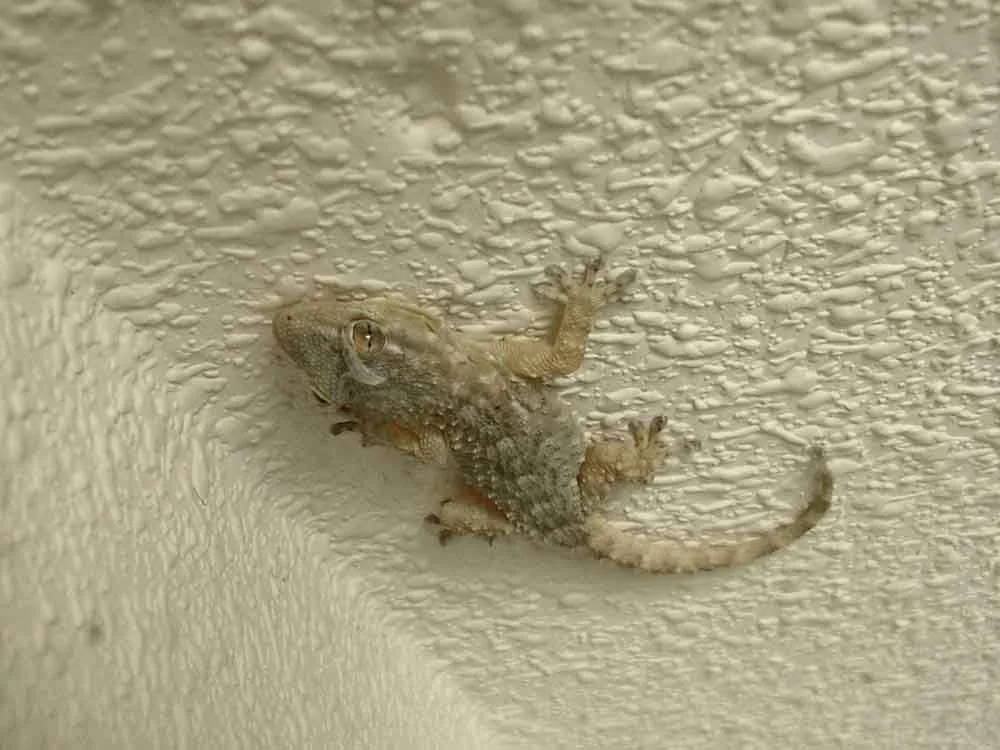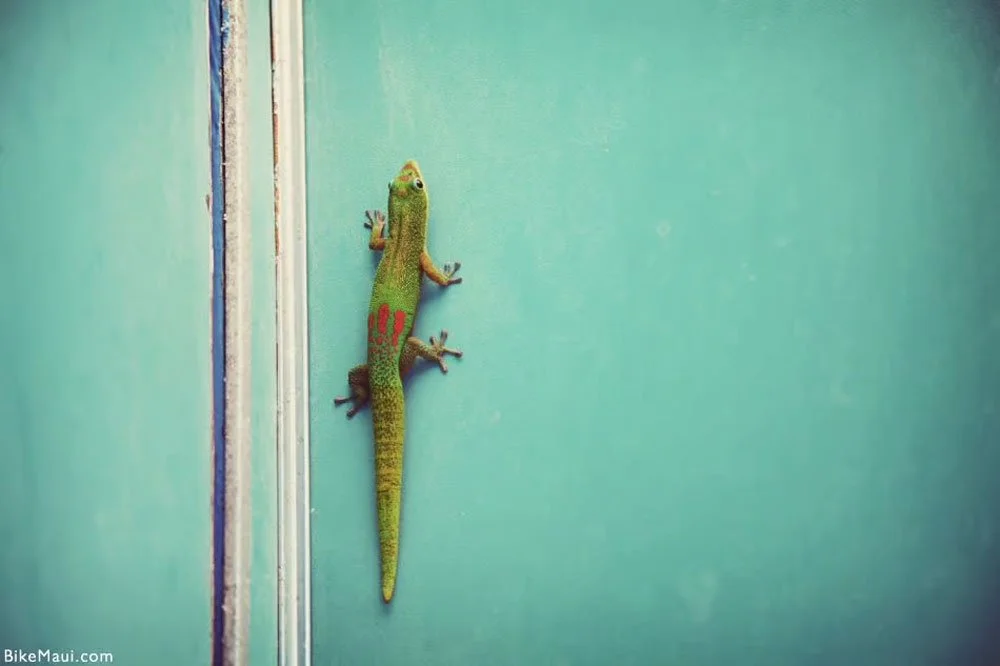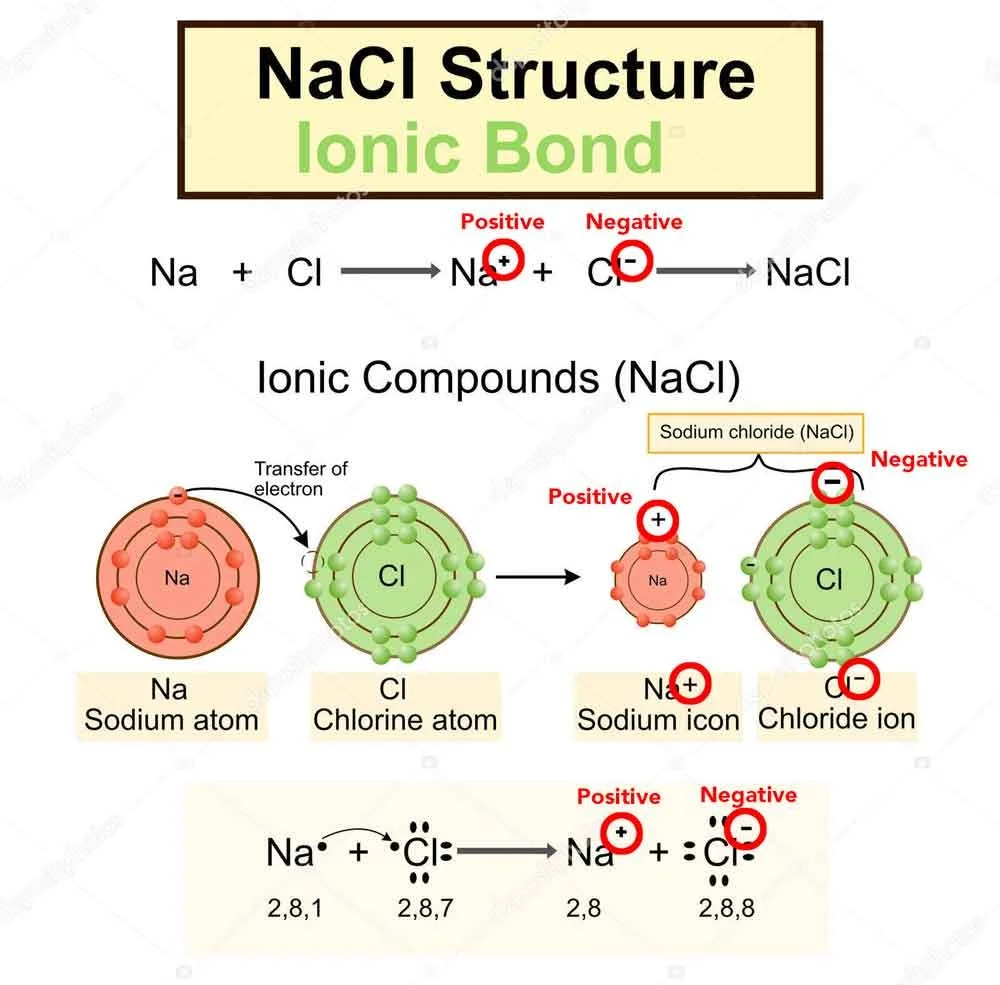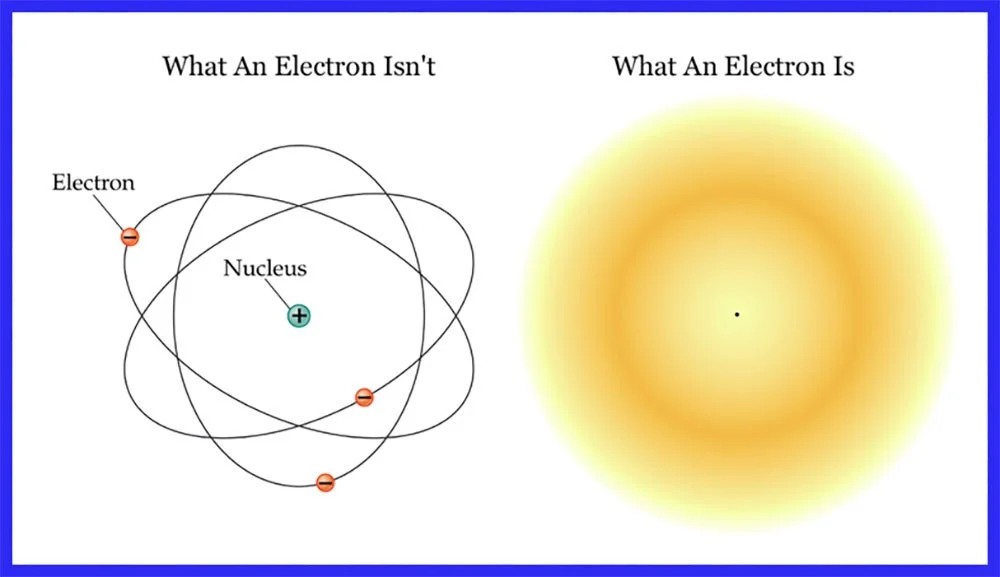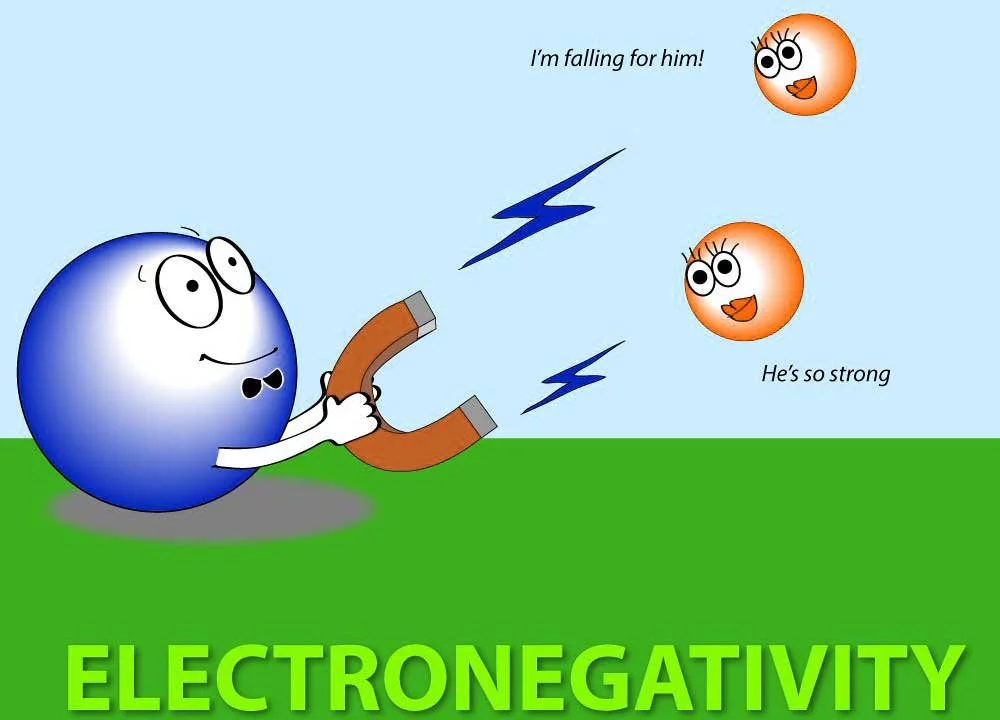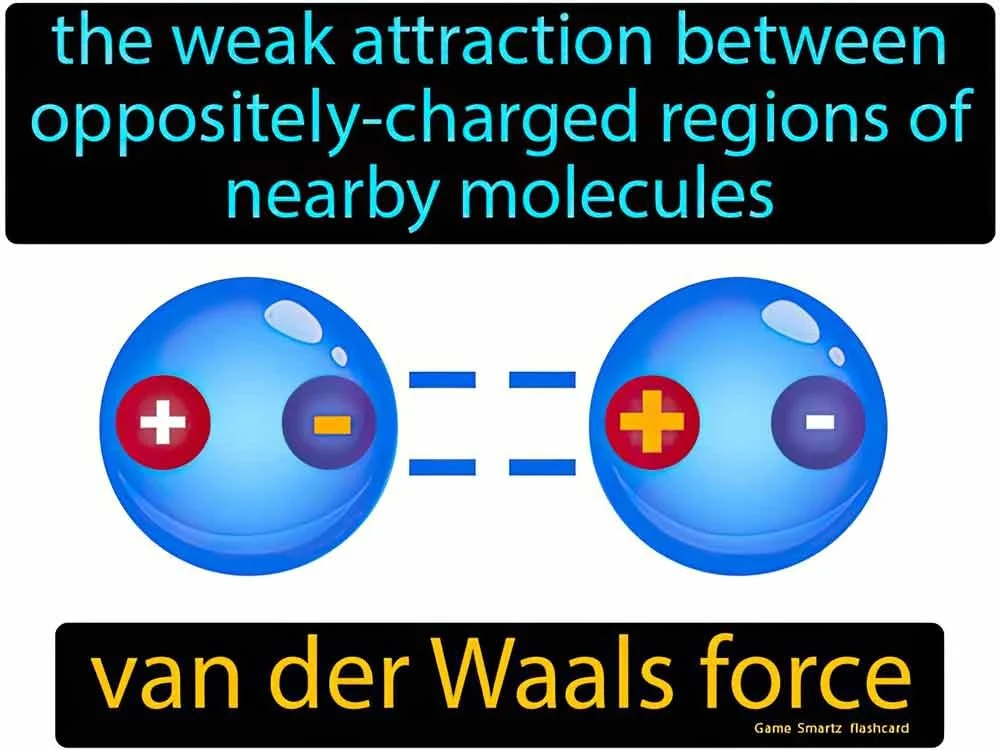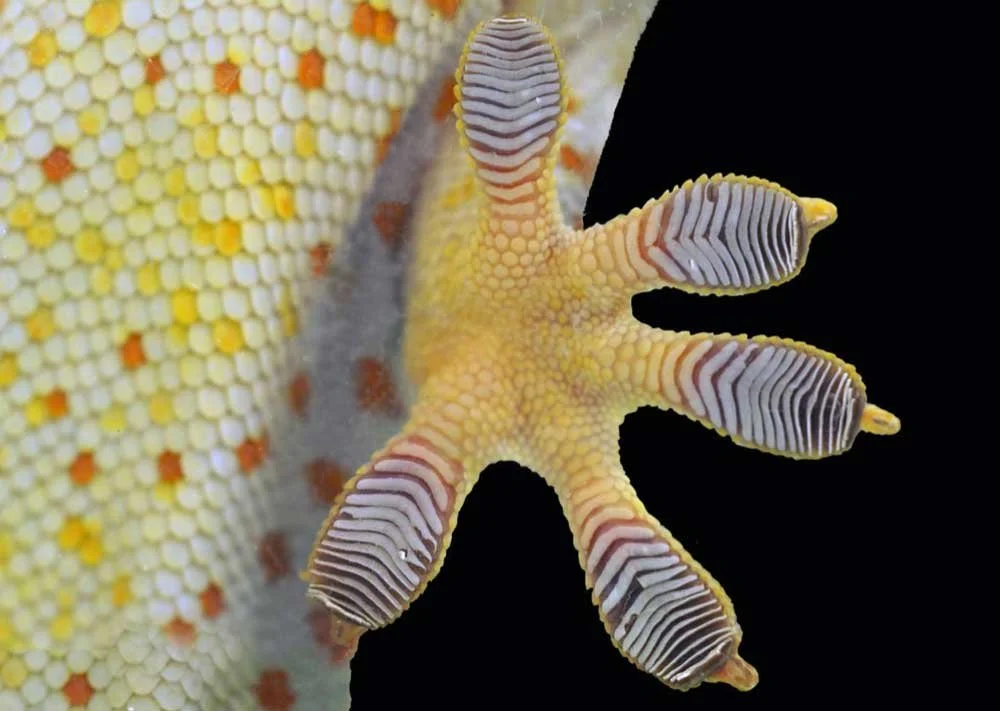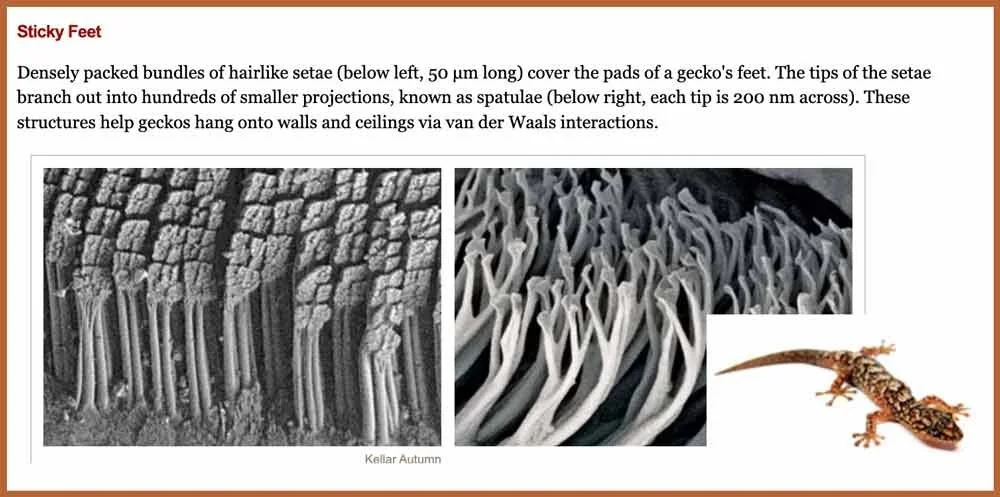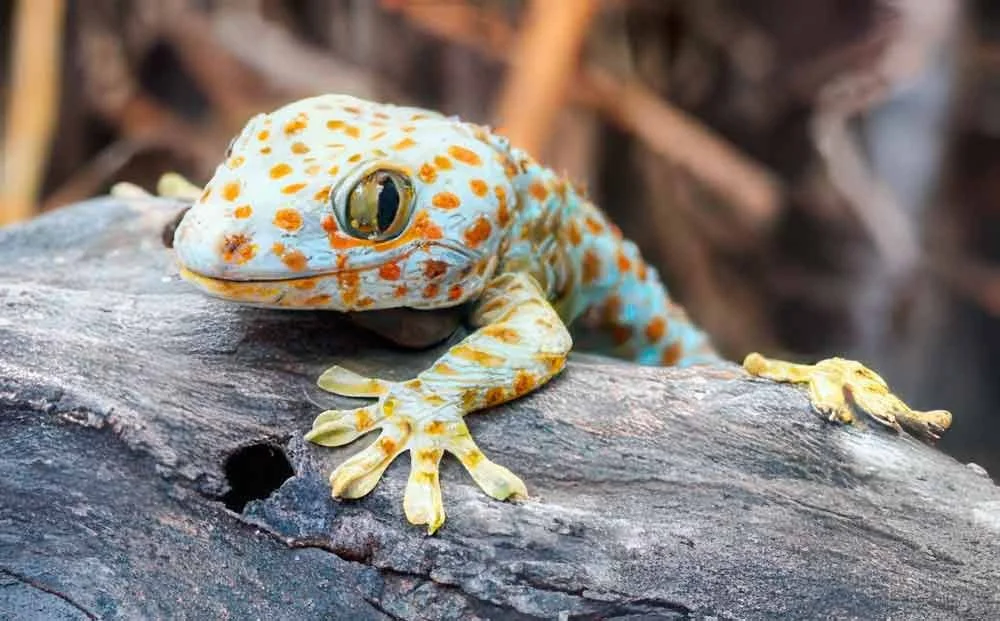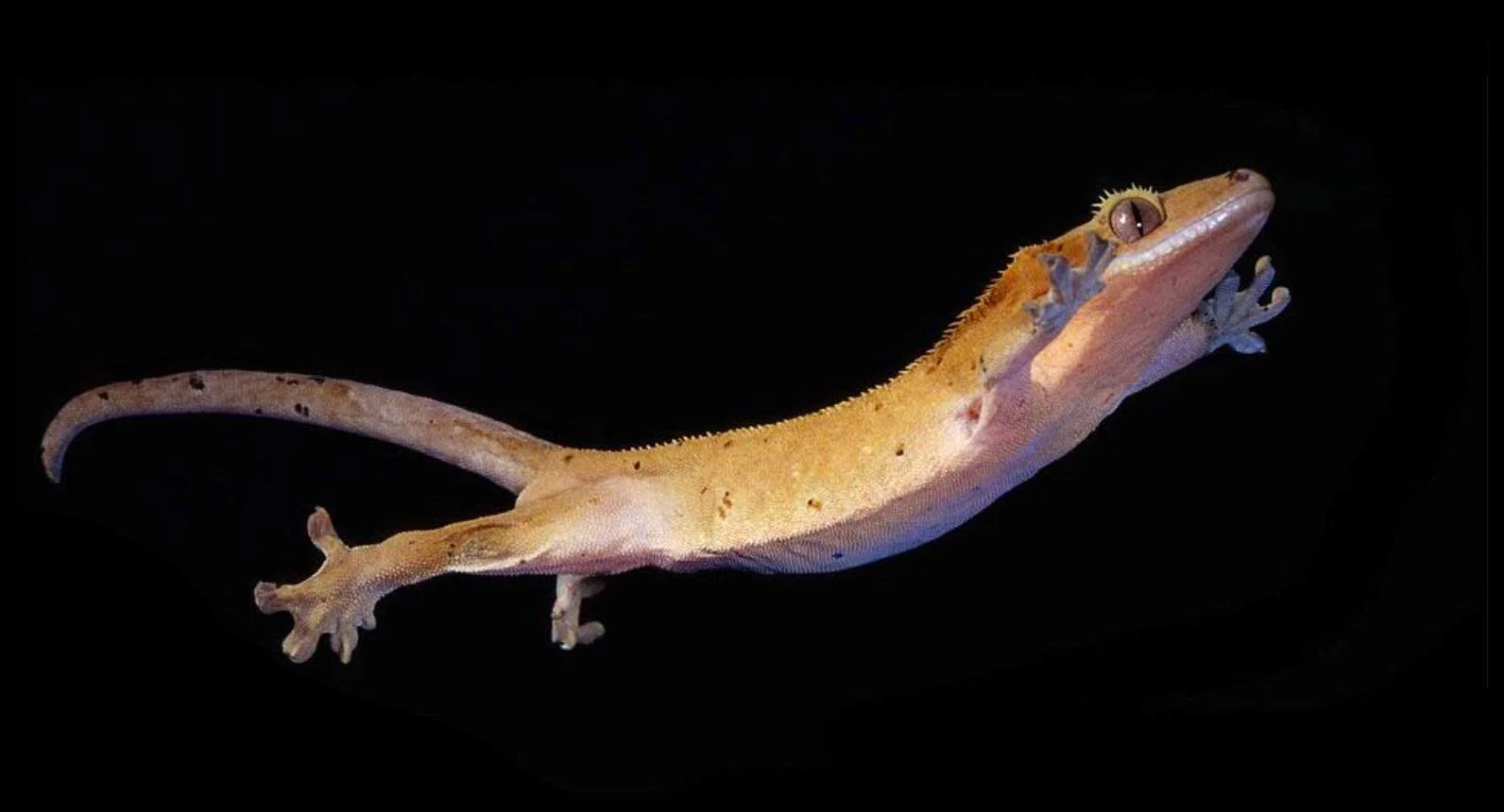How do geckos defy gravity?
In the video it says, “Geckos seem to defy gravity.” What does that mean?
What does it mean that “positive and negative charges attract”? (Hint: Think of a magnet.)
Chemists write salt as NaCl. What is “Na”?
What is “Cl”?
Some elements really want electrons. Can you name one element?
We used to think electrons circle an atom’s nucleus like the planets circle the sun. What do we now know?
An atom's relative greed for electrons is called what?
What do we call the weak attraction between oppositely charged regions of nearby molecules?
Gecko-toe ridges are covered in tiny hair-like structures, much thinner than human hair. What do we call those structures?
What do we call the even tinier bristles on those hair-like structures?
• Read •
How do geckos defy gravity?
It's midnight and all is still, except for the soft skittering of a gecko hunting a spider.
Geckos seem to defy gravity, scaling vertical surfaces and walking upside down without claws, adhesive glues or super-powered spiderwebs.
Instead, they take advantage of a simple principle: that positive and negative charges attract.
OPPOSITES ATTRACT
That attraction binds together compounds, like table salt, which is made of positively charged sodium (Na+) ions stuck to negatively charged chloride (Cl-) ions.
• Na = Sodium, Cl = Chorine, NaCl = Salt!
But a gecko's feet aren't charged and neither are the surfaces they're walking on.
So, what makes them stick?
The answer lies in a clever combination of intermolecular forces and stuctural engineering.
ELECTRONS & ELECTRON CLOUDS
All the elements in the periodic table have a different affinity for electrons.
Elements like oxygen and fluorine really, really want electrons, while elements like hydrogen and lithium don't attract them as strongly.
• We used to think electrons orbited the nucleus like planets orbit the sun.
• We now know electrons for electron clouds, and electrons could be anywhere in that cloud!
An atom's relative greed for electrons is called its electronegativity.
Electrons are moving around all the time and can easily relocate to wherever they're wanted most.
So when there are atoms with different electronegativities in the same molecule, the molecule’s cloud of electrons gets pulled towards the more electronegative atom.
That creates a thin spot in the electron cloud where positive charge from the atomic nuclei shines through, as well as a negatively charged lump of electrons somewhere else.
• Water (H2O) is a polar molecule with a negative pole and a positive pole
So the molecule itself isn't charged, but it does have positively and negatively charged patches. These patchy charges can attract neighboring molecules to each other.
They'll line up so that the positive spots on one are next to the negative spots on the other.
• With polar molecules, positive lines up to negative, as with magnets
There doesn't even have to be a strongly electronegative atom to create these attractive forces.
Electrons are always on the move, and sometimes they pile up temporarily in one spot. That flicker of charge is enough to attract molecules to each other.
Such interactions between uncharged molecules are called van der Waals forces.
They're not as strong as the interactions between charged particles, but if you have enough of them, they can really add up.
That's the gecko's secret.
Gecko toes are padded with flexible ridges. Those ridges are covered in tiny hair-like structures, much thinner than human hair, called setae.
• Ridges are covered in setae; setae are covered with spatulae.
And each of the setae is covered in even tinier bristles called spatulae.
Their tiny spatula-like shape is perfect for what the gecko needs them to do: stick and release on command.
• Ridges are covered in setae; setae are covered with spatulae.
When the gecko unfurls its flexible toes onto the ceiling, the spatulae hit at the perfect angle for the van der Waals force to engage.
The spatulae flatten, creating lots of surface area for their positively and negatively charged patches to find complimentary patches on the ceiling.
Each spatula only contributes a minuscule amount of that van der Waals stickiness.
But a gecko has about two billion of them, creating enough combined force to support its weight. In fact, the whole gecko could dangle from a single one of its toes.
That super stickiness can be broken, though, by changing the angle just a little bit.
So, the gecko can peel its foot back off, scurrying towards a meal or away from a predator.
This strategy, using a forest of specially shaped bristles to maximize the van der Waals forces between ordinary molecules has inspired man-made materials designed to imitate the gecko's amazing adhesive ability.
Artificial versions aren't as strong as gecko toes quite yet, but they're good enough to allow a full-grown man to climb 25 feet up a glass wall.
• If interested, you can watch this video in your free time: The Stickiest *Non-Sticky* Substance
In fact, our gecko's prey is also using van der Waals forces to stick to the ceiling.
So, the gecko peels up its toes and the chase is back on.
Adhesive – A sticky substance used to hold things together.
Atom – The tiny building block that everything in the world is made of.
Attract – To pull something closer, like a magnet pulling metal.
Ceiling – The top inside surface of a room.
Charges – Tiny amounts of electricity in particles, either positive (+) or negative (−).
Gravity – The invisible force that pulls things down to the ground.
Molecule – A group of atoms joined together that make up substances.
Ridges – Raised lines or bumps on a surface.
Scurry – To move quickly with small, fast steps.
Setae – Tiny hairs on a gecko’s toes that help it stick to surfaces.
Surface – The outside or top layer of something.
► COMPREHENSION QUESTIONS
— please answer with complete sentences
In the video it says, “Geckos seem to defy gravity.” What does that mean?
What does it mean that “positive and negative charges attract”? (Hint: Think of a magnet.)
Chemists write salt as NaCl. What is “Na”?
What is “Cl”?
Some elements really want electrons. Can you name one element?
We used to think electrons circle an atom’s nucleus like the planets circle the sun. What do we now know?
An atom's relative greed for electrons is called what?
What do we call the weak attraction between oppositely charged regions of nearby molecules?
Gecko-toe ridges are covered in tiny hair-like structures, much thinner than human hair. What do we call those structures?
What do we call the even tinier bristles on those hair-like structures?
► From EITHER/OR ► BOTH/AND
► FROM Right/Wrong ► Creative Combination
THESIS — Argue the case that nothing in the universe can defy gravity. Nothing!
ANT-THESIS — Argue the case that geckos defy gravity! Just look! And look at things floating around in the International Space Station! They’re defying gravity!
SYN-THESIS — Can you bring these two perspectives together?

